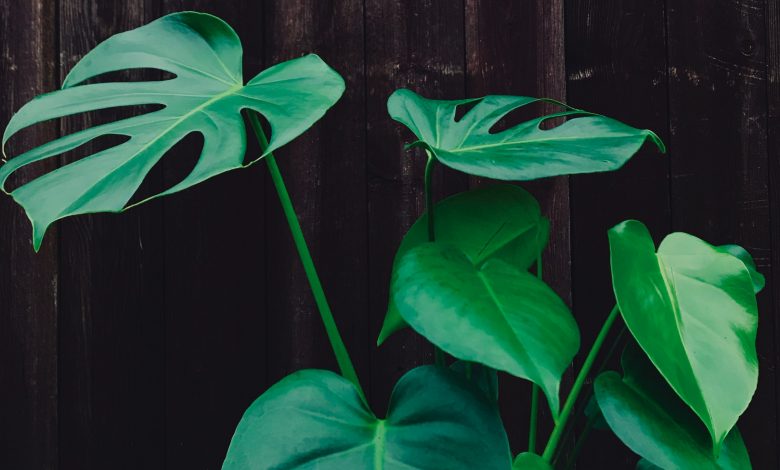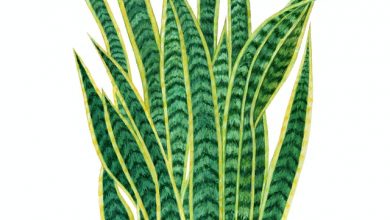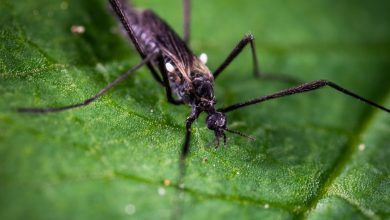How to Propagate Monstera

Otherwise known as split-leaf philodendron and Swiss Cheese plant, Monstera deliciosa is a tropical flowering plant originating in South and Central America. Monstera is an epiphyte and a member of the Araceae family of plants; it’s a mildly invasive species in Seychelles and Hawaii.
In nature, monstera can grow up to 35 feet tall, with broad, glossy heart-shaped leaves measuring up to three feet in length and two feet across. The plant earns its nicknames from the holes on its leaves that develop as the plant matures.
Although tall in the wild, monstera rarely grows past ten feet indoors. Still, it’s an admired houseplant for its size and tolerance to various conditions, including low light.
Propagating Monstera Deliciosa
Monstera’s resilience and accelerated growth allow easy propagation. Propagating monstera happens mostly by cuttings, but seeds will work too.
Cuttings
Monstera deliciosa will grow from small cuttings taken from a healthy plant, provided that the cutting has a stem, a node (preferably with adventitious roots), and two to three leaves.
Identify a part of the plant that meets these requirements, and cut it using a sterile knife or shears. After obtaining the cutting, there are two ways that you may propagate the plant: in soil or water. Either method works well; a slight advantage of water propagation is that you can observe the developing roots, provided the container is transparent.
Propagating Monstera Deliciosa in Water
Water propagation remains the easiest way to grow Monstera deliciosa. Plants propagated in water can serve decorative purposes, but more importantly, water propagation reveals the progress of the new plant.
Fill a container with water and put the cutting in it. Position the plant in a warm location with bright but indirect sunlight; direct sunlight will prove too harsh on the cutting.
It can take up to two weeks before roots start to emerge. The appearance of roots is dependent on temperature, light, the parent plant, and the cutting itself. You may change the water at intervals before the roots develop.
The emergence of new leaves is a cue that you can safely transfer the plant to a pot. Use a container with drain holes and well-drained soil. After the transfer, the plant may become fatigued, even losing some leaves as it gets used to the new environment. If this happens, keep the soil consistently moist and give the plants some time to adapt and recover.
Propagating Monstera Deliciosa in Soil
Propagating the Monstera deliciosa with soil allows you to skip the additional process of transferring the cutting from water to soil. On the other hand, soil propagation does not allow observation of the developing roots.
First, put the cutting in well-drained soil and give the plant warmth, indirect light, and moist soil. The existing leaves will go limp, as the new plant can’t absorb water until the roots have fully formed. The emergence of fresh leaves is tantamount to success; it’s an indication that the roots have fully developed, and the propagation was successful.
Some people recommend tugging the stem to check for resistance, which is an indication that the roots have formed. Doing this may lead to complications; it’s best to leave the plant alone and watch for new leaves. Soil propagation tends to be slower than water propagation but with no adverse effects.
Seed Propagation
Seeds come from a fruit. The latter part of the monstera’s specific name (deliciosa) refers to the delicious fruit it bears, which, when ripe, tastes like banana, pineapple, and mango. The fruit takes up to a year to ripen; unripe Monstera fruit is poisonous.
Monstera produces small, nut-like pale green seeds. Depending on how you obtain them, some seeds may have budding sprouts. Place two to three seeds on moist soil, being careful not to break off any sprouts, and then cover the seeds with a thin layer of the same soil.
Position the pot such that it gets enough warmth and humidity but not direct sunlight. You can meet the humidity requirements by covering the seeds with clear plastic wrap. The seeds will sprout within two to three weeks. At this time, you can remove the plastic wrap but ensure that the soil is consistently moist, never wet or dry.
Seed propagation is not the preferred method, as Monstera seeds aren’t readily available. The unavailability is because indoor monstera rarely produces flowers and fruits. Even wild Monsteras, when they bear fruit, take a year or more to produce mature fruit. Still, even when seeds are available, the seeds take a while to germinate. Also, Monsteras produced from seeds do not grow as fast as those propagated using cuttings.

Post Propagation Care
The Monstera deliciosa will need some care in its infancy, but the plant is easy to manage.
Temperature
Monstera deliciosa is a tropical plant. As such, higher temperatures do not affect the plant. It will accept temperatures slightly less than room temperature. If you propagate the plant in the winter, ensure that it gets enough warmth.
Light
Like all tropical plants, the split-leaf philodendron does not enjoy direct sunlight. Young split-leaf philodendrons in the wild grow under bigger Monsteras, using the broad leaves as shade from the sun.
Direct sunlight will burn the leaves of the newly propagated Monstera deliciosa, especially one grown from seeds. Light from all but a south-facing window will meet the requirements of the plant. You may use a full-spectrum fluorescent bulb to make up for particularly dark rooms.
Watering
Like the majority of indoor tropical plants, the Swiss Cheese plant prefers moist conditions to soggy soil. It’s better to underwater the plant than to over water.
Wilted leaves are the signs of insufficient watering and can easily get remedied. On the other hand, too much water will cause blackened leaves, root rot, and death in extreme cases.
Water the plant if a finger dipped into the soil comes out dry. In the winter, when the plant experiences slower growth, it won’t require much water.
Humidity
The plant prefers moderate to high levels of humidity. You can augment moisture for the young plant by misting or using a pebble tray with water. If you choose to mist, make sure to spray both sides of the leaves and only in the morning so that the water will evaporate by night.
Soil and Potting
Monstera deliciosa is an epiphyte; its roots cling to other trees instead of growing in the ground. As such, the ideal soil for indoor monstera is one that’s well-aerated and drained.
A commonly recommended soil for split-leaf philodendron is a combination of five parts of pine bark, one part sphagnum moss, and one part perlite. The sphagnum moss will retain moisture, while perlite and pine bark will allow water to drain quickly, and permit air.
If such a mixture is unattainable, then a combination of one part perlite and two parts of potting soil will work just as well.
The Swiss Cheese plant will eventually grow into a large plant, but this does not mean you should use a massive planter for new plants. Newly propagated plants, especially those from seeds, will fare well enough in smaller containers, as they take time to germinate and develop.
Also, an overly large pot will encourage root growth against foliage development. Repot the plant as it grows, going one or two sizes up each time.
Fertilizing
Fertilize the new plants twice a month in the growing season. Do not feed the plant in winter. Regular balanced fertilizers will work fine.
To prevent root burn arising from fertilizer build up in the soil, regularly flush the sod with clean water by allowing considerable amounts of water to flow through the soil and out of the drain holes.
Pest and Diseases
Root rot, leaf spot, and spider mites can affect the newly propagated monstera plant.
Root Rot
Like most house plants, the Swiss Cheese plant is susceptible to root rot, which is caused by overwatering. Signs of root rot include yellowing or distorted leaves, and wilting.
If the rot is not extensive, you may salvage the plant by cutting off the affected parts, cutting back on watering, and repotting the plant in fresh, well-drained soil. If some of the roots get removed, you’ll also need to prune the plant to enable it survive.
Leaf Spot
Leaf spot is a fungal disease, and it appears as brown or yellow spots on the leaves. Given time, these spots will grow, join together, and form large patches on the leaves. Remediation involves cutting off the affected blades and reducing humidity.
Spider Mites
Spider mites are small reddish insects, found mostly on the underside of the leaves. They suck sap from the plant, and if left unchecked, they’ll kill the young plant and spread to other house plants.
Use insecticides formulated for plants to get rid of spider mites.

Foliage
The leaves of newly propagated Monstera deliciosa, even those from cuttings with fenestrated leaves, will be solid. The holes will appear as the plant ages under suitable conditions, majorly light and temperature. Better lighting will result in bigger leaves with more fenestration.
Toxicity
Even in newly propagated seedlings, all parts of the plant are toxic, except the ripe fruit. Therefore, keep young Swiss Cheese plants from children and pets for their safety and that of the plants.



